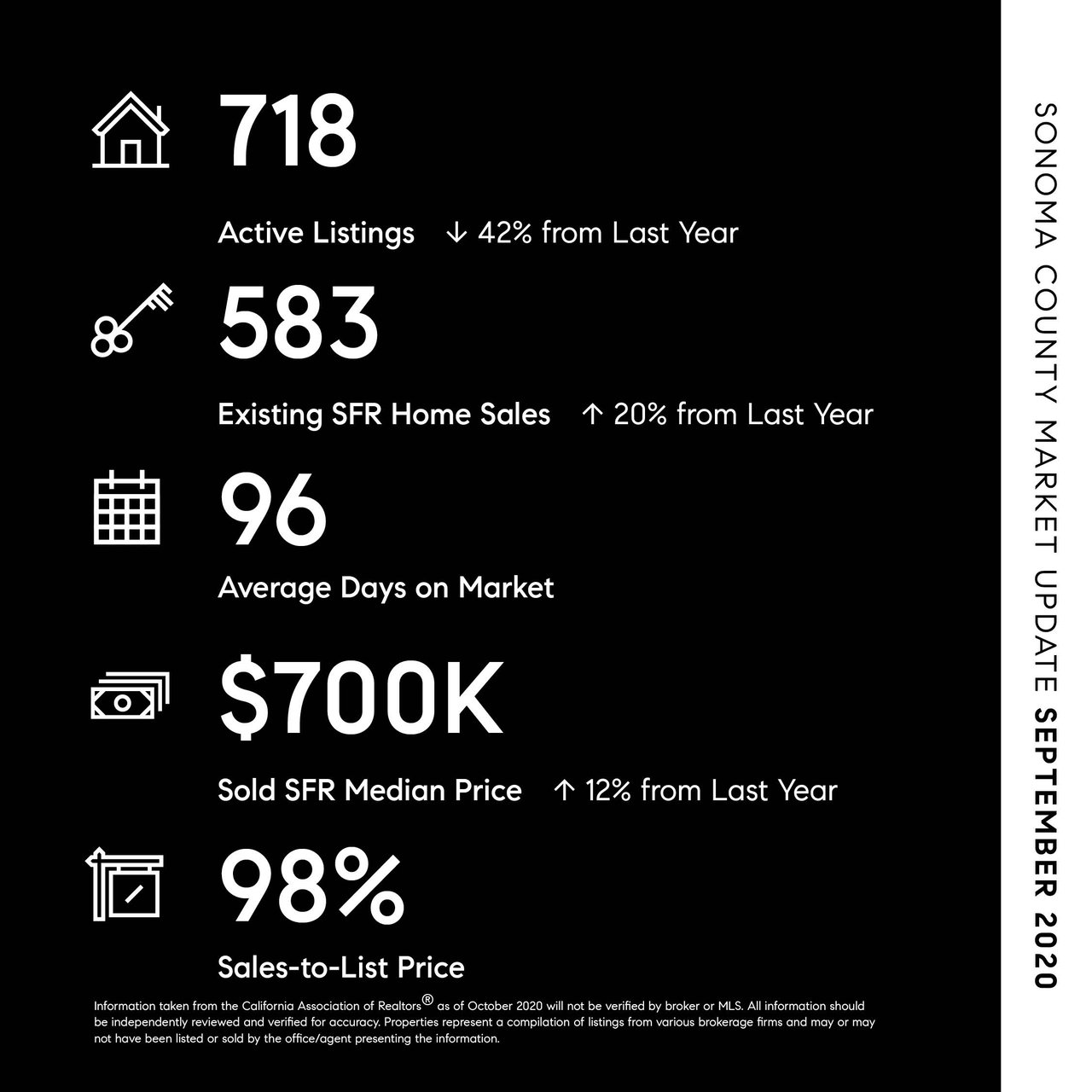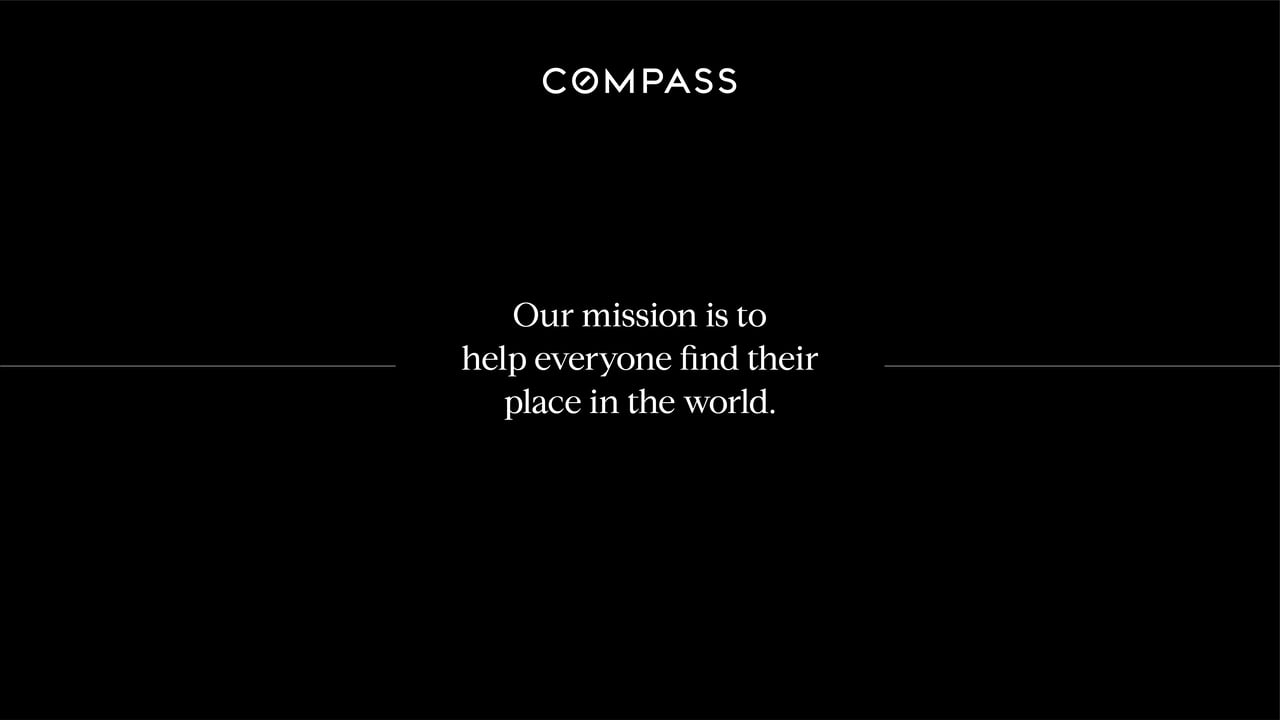As we manage to gain control over wildfires our markets continue to feel the Pandemic pressure of buyers looking to make our region their new home as they continue to exit the urban core of the Bay Area in favor of more wide open spaces and the immense lower cost of housing that we represent.
The Santa Rosa metro region is working to accommodate these demands. According to BAREIS MLS, with September in the rearview mirror, we find the marketplace absorbing homes at a heightened level above historical norms with only 240 single-family homes remaining for sale in the city and its environs – 37 percent less than this same time a year ago – coupled with a voracious level of buyer activity as 229 single-family homes were absorbed into pending contracts during the past month – adding further trend line confirmation to our “V” shaped recovery scenario with this metric being 33 percent greater than last September.
The entire municipality introduced 126 new listings to the market over the last month – 40 percent less than a year ago - while the most recent period also found Sellers handing over keys on 213 completed sales – 47 percent greater than a year earlier. This compression of metrics is affirmed by Santa Rosa recording its’ Months’ Supply of Inventory (MSI) hovering at 1.1 – attributed in good part due to the fundamental shift in population migration from the greater Bay Area.
MSI is the metric that indicates the number of months it would take to sell the current inventory at the current rate of sales. An MSI ranging from 4.0 to 6.0 is generally indicative of a balanced market, with lower numbers increasingly favoring sellers and vice versa.
Getting down to the underlying specifics, Northeast Santa Rosa saw the introduction of just 46 single-family homes in September – a 33 percent decrease from this same period a year ago. The supply of homes was met with over the top absorption during the period as there were only 119 dwellings for home seekers to consider by months end – 21 percent fewer than in 2019. Buyers embarked on 73 newly initiated escrows – nine percent greater than last September - while sellers received closing checks on another 90 properties – 58 percent ahead of this same time last year and delivering an MSI of 1.3 with indicators towards further tightening.
Southeast Santa Rosa saw the supply of available properties drop to 36 by months end – 53 percent less than a year earlier. This submarket debuted just 20 new homes in September while buyers garnered accepted deals on 44 more abodes – 42 percent greater than this period a year ago. This coveted corner of the city experienced 32 formal transfers – adding pressure to an already tight market with MSI falling to 1.1.
Oakmont is officially awake from several sleepy months of new sales. This 55+ retirement community witnessed just 11 sellers debuting new offerings in the period – not enough to keep the overall availability from compressing to 36 by months end. Buyers found their way to acceptances on 24 new purchases while sellers concluded 20 transactions during the period. The activity level indicates an MSI of 1.8 – and continues to show a trend towards joining the balance of the other four boroughs of Santa Rosa.
Multiple offers are still the rampant norm in Northwest Santa Rosa as buyers swooped in to gain control of 58 more deals leaving just 28 available single-family homes to carry over into October. Sellers committed 33 new offerings to the markets – nearly half of what was brought out last year – while another 54 homes completed the closing process. This intense activity has brought about an MSI of 0.5.
With 48 percent fewer listings than just a year earlier, Southwest Santa Rosa found that it had just 21 homes available by month’s end after buyers completed 17 more deals during the period. Sellers pitched in to bring 16 new listings to the table in September while buyers pledged their paychecks towards 30 accepted contracts during the month – causing this submarkets MSI to crater to 1.2 with expectations of significant tightening moving forward.
Consumers continue to be told by their employers to expect to be able to work from home as many have experienced the level of productivity of their employees has not dropped. This is allowing many to seek housing opportunities outside their existing communities, lower - or even eliminate commuting activities - and thereby allowing more time at home and less on the road.
If happy cows make happy milk, then we can only surmise that happy employees are better at what they do as well, not to mention happier!











